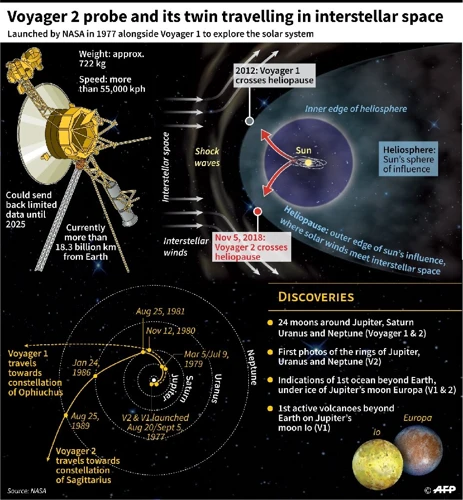The vastness of space and the mysteries it holds never cease to amaze us. Among the countless heavenly bodies that pepper the cosmos, two types stand out: exoplanets and planets. Despite the similar-sounding names, exoplanets and planets have distinct characteristics that set them apart. From their formation to detection methods and even the potential for hosting life, these celestial objects offer a glimpse into the intricacies of the universe. In this article, we will delve into the fascinating world of exoplanets and planets, exploring their differences and shedding light on the wonders they hold. So sit back, prepare to be astounded, and join us on this cosmic journey of discovery.
Contents
- Formation
- Characteristics
- Detection Methods
- Extrasolar Habitability
- Implications and Future Research
- Conclusion
-
Frequently Asked Questions
- 1. How do planets form?
- 2. What makes exoplanet formation different?
- 3. How do we detect planets?
- 4. What are some methods for detecting exoplanets?
- 5. Are all exoplanets habitable?
- 6. What is the habitable zone?
- 7. What are potentially habitable exoplanets?
- 8. Will we ever find another Earth-like planet?
- 9. What are the implications of discovering habitable exoplanets?
- 10. What future research is being done in the field of exoplanet studies?
- References
-
Frequently Asked Questions
- 1. Why are exoplanets important in the study of astronomy?
- 2. How are planets formed?
- 3. What sets exoplanet formation apart from planet formation?
- 4. How can we detect planets in other star systems?
- 5. What are some characteristics of planets?
- 6. What makes exoplanets different from planets?
- 7. Is there a possibility of habitable exoplanets?
- 8. Are there any exoplanets similar to Earth?
- 9. What are the implications of discovering habitable exoplanets?
- 10. What are the future prospects for exoplanet research?
- References
- Read More
Formation

Understanding how exoplanets and planets form is a key factor in distinguishing between the two. Planet formation occurs within a protoplanetary disk, a swirling disk of gas and dust that surrounds a young star. Over millions of years, these particles clump together due to gravity, forming larger and larger bodies called planetesimals. Through further collisions and accretion, planetesimals eventually grow into full-fledged planets. On the other hand, exoplanet formation follows a similar process, but with some distinct variations. Exoplanets are believed to form within their own protoplanetary disks, but these disks are often different from those around stars like our Sun. They can be smaller, different in composition, or found in binary star systems. The formation of exoplanets is still a topic of active research, and scientists are continually discovering new insights into how these intriguing celestial bodies come into existence.
1.1 Planet Formation
Planet formation is a fascinating process that occurs within protoplanetary disks surrounding young stars. It involves a series of intricate steps that ultimately lead to the creation of a fully formed planet. Here are some key aspects of planet formation:
1. Accretion: Within the protoplanetary disk, small dust particles collide and stick together due to electrostatic forces and van der Waals interactions. This process is known as accretion and is the initial step in planet formation.
2. Planetesimals: As these dust particles continue to collide and merge, they form larger bodies called planetesimals. Planetesimals can range in size from a few meters to several kilometers in diameter.
3. Protoplanets: Through further accretion, planetesimals continue to grow, gradually becoming protoplanets. Protoplanets are larger than planetesimals and can have sizes reaching several hundred kilometers in diameter.
4. Gravitational Collapse: As protoplanets accumulate more and more mass, their gravitational pull becomes stronger. This eventually leads to gravitational collapse, resulting in the formation of a fully grown planet.
5. Differentiation: Once a planet forms, it may undergo a process called differentiation. This occurs when the planet’s interior becomes heated, causing the denser materials to sink towards the core while lighter materials rise to the surface. The differentiation process creates distinct layers within the planet.
6. Clearing the Orbit: After a planet forms, it starts to interact with the remaining material in the protoplanetary disk. Through gravitational interactions and collisions, the planet clears its orbit of debris, shaping its final orbital path.
Understanding planet formation is crucial in unraveling the mysteries of our own Solar System and in the search for exoplanets. By studying the intricate processes involved, scientists gain valuable insights into the conditions necessary for the formation of habitable worlds and the possibilities of life beyond our own planet.
1.2 Exoplanet Formation
Exoplanet formation is a captivating subject that continues to fascinate scientists worldwide. While the general process is similar to planet formation, there are distinct factors that differentiate the two. Here are some key aspects of exoplanet formation:
1. Protostellar Disks: Exoplanets typically form within protostellar disks, which are circumstellar disks made up of gas and dust surrounding a young star. These disks are remnants of the star’s formation process and provide the building blocks for exoplanets.
2. Core Accretion: The core accretion theory is one of the most widely accepted models for exoplanet formation. According to this theory, exoplanets begin as small solid cores that gradually accumulate more mass through collisions with dust and gas in the protostellar disk. This process is similar to the formation of planets within our own solar system.
3. Migration: In some cases, exoplanets may undergo a phenomenon called migration. This occurs when the gravitational interactions between the planet and the protostellar disk cause it to move from its original formation location. Migration can significantly impact the final characteristics of an exoplanet, such as its distance from the star and orbital eccentricity.
4. Hot Jupiters and Ice Giants: Exoplanets come in a variety of sizes and compositions. Hot Jupiters, for example, are massive gas giants that orbit very close to their host stars. These planets likely form farther away from the star and migrate inward due to interactions with the protostellar disk. Ice giants, similar to Uranus and Neptune in our solar system, are believed to form further out in the disk, where it is colder and more conducive to the accumulation of icy materials.
5. Alternative Formation Mechanisms: While core accretion is the prevailing theory, alternative mechanisms for exoplanet formation also exist. For instance, the disk instability model suggests that exoplanets can form directly from the gravitational collapse of a massive gas and dust disk. Other theories propose the formation of exoplanets through gravitational interactions between stellar companions in binary star systems.
As ongoing observations and advancements in technology continue to unveil the mysteries of the universe, our understanding of exoplanet formation will undoubtedly expand. These diverse and fascinating formations offer a glimpse into the vast diversity of exoplanetary systems that exist beyond our own. To learn more about the stunning variety of exoplanets and their formations, check out our in-depth exploration of /exoplanet-detection-methods/.
Characteristics

When it comes to characteristics, planets and exoplanets have some notable distinctions. Planets within our solar system exhibit diverse traits such as varying sizes, compositions, and atmospheres. For example, gas giants like Jupiter are predominantly composed of hydrogen and helium, while terrestrial planets like Earth have rocky surfaces. They also possess unique features like mountains, oceans, and atmospheres that support life as we know it. On the other hand, exoplanets, being beyond our solar system, exhibit an even wider range of characteristics. Some may be similar to planets within our solar system, but others may have extreme conditions, such as scorching hot surfaces or freezing temperatures. Exoplanets also exhibit a wide range of sizes, from smaller than Earth to larger than Jupiter, offering a diverse panorama of planetary landscapes. Scientists analyze the characteristics of both planets and exoplanets to gain insights into the formation, evolution, and potential habitability of these awe-inspiring celestial bodies.
2.1 Planetary Characteristics
Planetary characteristics encompass a wide range of attributes that define these celestial bodies. Firstly, planets are generally found in our own solar system, orbiting around the Sun. They can be categorized into two main types: terrestrial planets, such as Earth and Mars, which are predominantly composed of rock and metal, and gas giants like Jupiter and Saturn, consisting mostly of hydrogen and helium. Planets also possess a variety of sizes, from small rocky worlds like Mercury to massive giants like Jupiter. Another crucial characteristic is their atmospheres, which vary greatly depending on factors like distance from the star, composition, and volcanic activity. While rocky planets may have thin or no atmospheres, gas giants can boast thick and dynamic atmospheres filled with swirling storms and bands of clouds. Additionally, planets have diverse surface features, ranging from mountains, canyons, and valleys to plains and impact craters. These features offer insight into the geological processes and history of a planet. Understanding the intricate complexities of planetary characteristics opens up pathways to not only unravel the mysteries of our solar system but also to potentially identify similar features in exoplanets beyond our cosmic neighborhood.
2.2 Exoplanetary Characteristics
Exoplanets, being planets that exist outside of our solar system, exhibit a wide range of fascinating characteristics. One of the notable features of exoplanets is their incredible diversity. They come in all shapes and sizes, ranging from gas giants several times the size of Jupiter to rocky planets similar to Earth. In fact, some exoplanets have been discovered within the habitable zone, where conditions might be suitable for liquid water to exist on their surfaces, a crucial factor for supporting life as we know it. Exoplanets can have eccentric orbits and may even be tidally locked, meaning that one side of the planet always faces its host star. These unique characteristics make exoplanets a captivating field of study for astronomers and astrophysicists. By analyzing their atmospheric compositions and studying their atmospheres using sophisticated techniques like spectroscopy, scientists can gain valuable insights into the conditions and potential habitability of exoplanets. With the advancement of technology and the continuing efforts of the scientific community, we can expect to uncover even more intriguing exoplanetary characteristics in the future, unraveling the mysteries of these distant worlds.
Detection Methods

Detecting both exoplanets and planets requires the use of sophisticated methods and instruments. Planet detection primarily relies on direct observation using telescopes. Astronomers search for slight dimming of a star’s light, known as the transit method, as a planet passes in front of it. They also look for the wobbling motion of a star caused by the gravitational pull of orbiting planets, known as the radial velocity method. Astronomers utilize the astrometry method, which involves measuring the tiny shifts in a star’s position on the celestial sphere caused by the presence of planets. Conversely, detecting exoplanets is a bit more challenging due to their distance and the overwhelming brightness of their host stars. Techniques such as the transit method, radial velocity method, and astrometry method are also utilized for exoplanet detection. However, astronomers have developed specialized tools like the Kepler spacecraft and ground-based telescopes equipped with high-precision instruments to detect the faint signals of exoplanets. These cutting-edge techniques enable scientists to uncover the existence of exoplanets and gather crucial information about their characteristics and orbits, expanding our understanding of the vast expanse of the universe.
3.1 Detecting Planets
Detecting planets is a fascinating field of study that has seen significant advancements in recent years. Astronomers employ various techniques and instruments to identify and study planets in our own solar system and beyond. Here are some key methods used for detecting planets:
1. Radial Velocity Method: This technique involves observing the slight wobble of a star caused by the gravitational pull of an orbiting planet. By measuring the changes in a star’s radial velocity, scientists can infer the presence of a planet and even determine its mass.
2. Transit Method: Utilizing space-based telescopes like NASA’s Kepler and TESS, astronomers search for periodic dips in a star’s brightness caused by a planet passing in front of it. These transits reveal valuable information about the planet’s size, orbit, and even atmosphere.
3. Direct Imaging: Directly capturing an image of a planet is a challenging task due to the overwhelming brightness of its host star. However, advancements in technology have allowed astronomers to develop techniques like adaptive optics and coronagraphs, which block out the star’s light, enabling direct observation of planets.
4. Gravitational Microlensing: This method relies on the gravitational lensing effect, where a planet’s gravitational field magnifies the light of a distant star as it passes in front of it. By carefully analyzing the changes in brightness, researchers can detect the presence of a planet.
5. Timing Variations: When multiple planets exist within a system, their gravitational interactions can cause regular variations in transit times or orbital periods. These subtle timing variations can provide clues about the presence of additional planets.
It’s important to note that each detection method has its strengths and limitations, and astronomers often rely on a combination of methods to confirm and study planets. The continuous advancements in technology and the development of new techniques provide exciting opportunities for discovering and characterizing more planets in our galaxy and beyond.
3.2 Detecting Exoplanets
Detecting exoplanets is a challenging task, considering their immense distance from us and their dimness compared to the stars they orbit. Scientists employ various methods and technologies to overcome these obstacles and uncover the existence of these distant worlds. One widely used technique is the transit method. This method involves observing a star and looking for regular dips in its brightness, indicating that an exoplanet is passing in front of it, blocking a portion of its light. By analyzing the pattern and duration of these dips, scientists can determine the size, orbit, and even some characteristics of the exoplanet. Another method is the radial velocity method. This technique relies on measuring the subtle shifts in a star’s spectrum caused by the gravitational tug of an orbiting exoplanet. Scientists can detect these shifts in the star’s light and infer the presence of a planet based on the regularity of the pattern. The direct imaging method involves attempting to capture actual images of exoplanets, which is an incredibly difficult feat due to their faintness and proximity to bright stars. Advancements in technology, such as high-contrast imaging and coronagraphic techniques, have made this method more feasible in recent years. Other techniques, such as the microlensing method and the astrometry method, rely on the gravitational effects of exoplanets on the light or position of other stars, respectively. Each detection method has its strengths and limitations, and scientists often use multiple approaches to gain a comprehensive understanding of exoplanets and their diverse characteristics. With continued advancements in technology and ongoing research, our ability to detect and study exoplanets will undoubtedly expand, revealing even more intriguing discoveries in the vastness of the cosmos.
Extrasolar Habitability

One of the most intriguing aspects of exoplanets and planets is their potential for habitability beyond Earth. Within this realm, understanding the concept of the habitable zone is essential. The habitable zone, also known as the “Goldilocks zone,” refers to the region around a star where conditions are just right for liquid water to exist on the surface of a planet. This parameter is crucial because water is considered a fundamental prerequisite for life as we know it. While Earth resides comfortably within the habitable zone of our solar system, the search for potentially habitable exoplanets has been an ongoing quest. Scientists have identified numerous exoplanets situated within their respective habitable zones, providing hope that these distant worlds may possess the necessary conditions for life. Further research and exploration in this field hold the potential to unravel the mysteries of extrasolar habitability and may pave the way for future discoveries that could revolutionize our understanding of life in the universe.
4.1 Habitable Zone
Within the realm of exoplanets, one key aspect of interest is the concept of the habitable zone. This zone, also known as the “Goldilocks zone,” refers to the region around a star where conditions may be suitable for the existence of liquid water and, therefore, the potential for supporting life as we know it. The habitable zone is not a fixed, static location, but rather it depends on the characteristics of each star. Factors such as the star’s size, temperature, and energy output determine the boundaries of the habitable zone. In general, planets too close to their star would be too hot, causing water to evaporate, while those too far away would be too cold, causing water to freeze. Planets located within the habitable zone have the right conditions where liquid water could exist on their surfaces. The search for exoplanets within the habitable zone is of tremendous interest to scientists, as they hold the potential for harboring life beyond our own planet. While we have yet to discover definitive evidence of life on exoplanets, the study of the habitable zone and its implications continues to propel scientific research forward, bringing us closer to understanding the potential habitability of other worlds in the vastness of space.
4.2 Potentially Habitable Exoplanets
Potentially habitable exoplanets are a subject of immense fascination within the scientific community. These are exoplanets that reside within the habitable zone of their star, also known as the Goldilocks zone. The habitable zone refers to the region where conditions are just right for liquid water to exist on the planet’s surface, a key ingredient for the possibility of life as we know it. Scientists use various criteria to determine the potential habitability of exoplanets, including their size, composition, and distance from their host star. One example of a potentially habitable exoplanet is Proxima b, a planet located in the habitable zone of the star Proxima Centauri, our closest neighboring star system. This Earth-sized planet orbits within the region where temperatures could allow the presence of liquid water. Additionally, another potentially habitable exoplanet is TRAPPIST-1e, part of the TRAPPIST-1 system. This exoplanet is similar in size to Earth and receives similar amounts of starlight, further fueling the excitement surrounding its potential for supporting life. Studying these potentially habitable exoplanets is crucial in our quest to understand if life exists beyond our own planet. Scientists are actively researching and refining methods to detect and study the atmospheres of these intriguing worlds, hoping to uncover signs of life or gain insights into the conditions necessary for life to thrive in the universe. The exploration of potentially habitable exoplanets represents a significant step forward in our understanding of the cosmos and the possibility of finding extraterrestrial life.
Implications and Future Research

The study of exoplanets and planets has significant implications for our understanding of the universe and the potential for extraterrestrial life. Continued research in this field holds promise for uncovering new insights and advancing our knowledge in several key areas. One area of focus is the exploration of extrasolar habitability. By identifying exoplanets within the habitable zone of their host star, scientists can determine if conditions exist for liquid water and the potential for life as we know it. Understanding the habitable zone and the factors that contribute to a planet’s suitability for life is crucial in our quest to find habitable environments beyond Earth. Future research will involve refining the methods used to identify potentially habitable exoplanets, such as studying their atmospheres and searching for signs of biological activity. Another significant implication is the development of new detection methods. Scientists are constantly innovating and refining techniques to improve the accuracy and sensitivity of detecting exoplanets. This includes utilizing space-based telescopes like NASA’s Kepler and TESS missions, as well as ground-based observatories equipped with state-of-the-art instruments. As technology advances, future missions and instruments may provide even more detailed data on exoplanet composition, atmosphere, and potentially habitable conditions. Additionally, research in this field can shed light on the broader question of our place in the cosmos, addressing fundamental questions about the prevalence of life in the universe and whether we are alone. By studying the vast array of exoplanets and planets, researchers can gain insights into planetary systems, stellar evolution, and the processes that give rise to a diverse range of celestial bodies. Ultimately, the implications and future research in this field have the potential to revolutionize our understanding of the universe and our place within it.
Conclusion

In conclusion, the study of exoplanets and planets has unveiled a vast array of unique and fascinating characteristics. From their distinct formation processes to the methods used to detect them, these celestial objects have captivated the minds of scientists and space enthusiasts alike. The exploration of exoplanets has revealed the potential for habitable worlds beyond our own solar system, offering tantalizing prospects for the search for extraterrestrial life. While much is still unknown about these distant worlds, ongoing research and technological advancements continue to push the boundaries of our understanding. As our knowledge expands, so does our appreciation for the marvels of the universe. Whether it’s pondering the intricate hierarchy of an ancient civilization or deciphering the complex relationships between celestial bodies through astrological charts, the exploration of exoplanets and planets invites us to embark on a never-ending quest for knowledge and discovery. So let us continue to gaze up at the stars, for they hold the secrets to our past, present, and future.
Frequently Asked Questions

1. How do planets form?
Planets form within protoplanetary disks, where particles clump together due to gravity, forming larger bodies called planetesimals. These planetesimals then collide and accrete to eventually become full-fledged planets.
2. What makes exoplanet formation different?
Exoplanets also form within protoplanetary disks, but these disks can be different from those around stars like our Sun. They may be smaller, have different compositions, or exist in binary star systems.
3. How do we detect planets?
Planets within our own solar system can be detected through direct observation, telescopes, and space exploration missions. The presence of planets can be inferred by observing their influence on the star they orbit.
4. What are some methods for detecting exoplanets?
Exoplanets are often detected using various indirect methods, including the transit method, radial velocity method, and astrometry. These techniques analyze changes in a star’s brightness, radial velocity, or position, respectively.
5. Are all exoplanets habitable?
No, not all exoplanets are habitable. The concept of habitability depends on several factors, including the proximity to the host star, the presence of liquid water, and the composition of the exoplanet’s atmosphere.
6. What is the habitable zone?
The habitable zone, also known as the Goldilocks zone, refers to the region around a star where conditions may be just right for the existence of liquid water on the surface of an orbiting planet.
7. What are potentially habitable exoplanets?
Potentially habitable exoplanets are those that orbit within the habitable zone of their host star and have conditions that could potentially support the existence of liquid water, making them prime candidates for further exploration.
8. Will we ever find another Earth-like planet?
While the search for an Earth-like planet is ongoing, scientists have already discovered several exoplanets that possess similar characteristics to Earth, including size, composition, and location within the habitable zone.
9. What are the implications of discovering habitable exoplanets?
The discovery of habitable exoplanets would have significant implications for our understanding of life in the universe. It could provide insights into the prevalence and diversity of life beyond Earth and potentially pave the way for future interstellar exploration.
10. What future research is being done in the field of exoplanet studies?
Scientists are continuously developing and refining detection techniques to discover more exoplanets and gather more detailed information about their characteristics. This includes advancements in space telescopes, like the upcoming James Webb Space Telescope, that will expand our knowledge of exoplanets and their potential for hosting life.
References
- Exoplanets: Everything you need to know about the worlds …
- Overview | Planet Types – Exoplanet Exploration – NASA
Frequently Asked Questions

1. Why are exoplanets important in the study of astronomy?
Exoplanets are important in the study of astronomy because they offer us a glimpse into the vast diversity of planetary systems beyond our own. By studying exoplanets, scientists can gain insight into the formation, evolution, and potential habitability of planets in other star systems.
2. How are planets formed?
Planets are formed through a process called accretion, where dust and gas in a protoplanetary disk come together to form larger and larger bodies. These bodies eventually accumulate enough mass to become planets. The exact details of planet formation are still being studied, but this process occurs over millions of years.
3. What sets exoplanet formation apart from planet formation?
The main difference lies in the environment. Exoplanets form around stars other than our Sun, and their formation is influenced by the unique conditions of those star systems. Exoplanets can also form in a variety of different ways, including core accretion and disk instability.
4. How can we detect planets in other star systems?
Scientists can detect planets in other star systems using a variety of methods. These include the transit method, where a planet passing in front of its star causes a slight decrease in brightness, and the radial velocity method, which measures the gravitational tug a planet exerts on its star, causing the star to move back and forth.
5. What are some characteristics of planets?
Planets are generally large celestial bodies that orbit a star and do not produce their own light. They can be rocky or gaseous in composition and are capable of supporting life, as is the case with Earth. Planets also have an atmosphere and can have moons.
6. What makes exoplanets different from planets?
Exoplanets, by definition, are planets that exist outside of our solar system. They can have a wide range of sizes, compositions, and orbits. Unlike planets within our solar system, exoplanets are not directly observable and require specialized techniques to detect and study.
7. Is there a possibility of habitable exoplanets?
Yes, there is a possibility of habitable exoplanets. Scientists search for planets within the habitable zone of their star, which is the region where conditions may be suitable for liquid water to exist. While the presence of liquid water is a key factor in determining habitability, other factors such as atmosphere and composition also play a role.
8. Are there any exoplanets similar to Earth?
Scientists have discovered several exoplanets that are similar in size to Earth and orbit within the habitable zone of their star. These exoplanets, known as “earth-like” or “super-Earths,” are of great interest as they may have the potential to support life as we know it.
9. What are the implications of discovering habitable exoplanets?
The discovery of habitable exoplanets would have significant implications for our understanding of the universe and our place in it. It would provide evidence that Earth-like conditions can exist elsewhere in the cosmos, opening up the possibility of finding extraterrestrial life or even potential future colonization of other planets.
10. What are the future prospects for exoplanet research?
The future of exoplanet research is promising. With advancements in technology and space missions dedicated to exoplanet exploration, scientists will be able to study these distant worlds in greater detail. This could include studying their atmospheres for signs of life and further understanding the formation and evolution of planetary systems.







